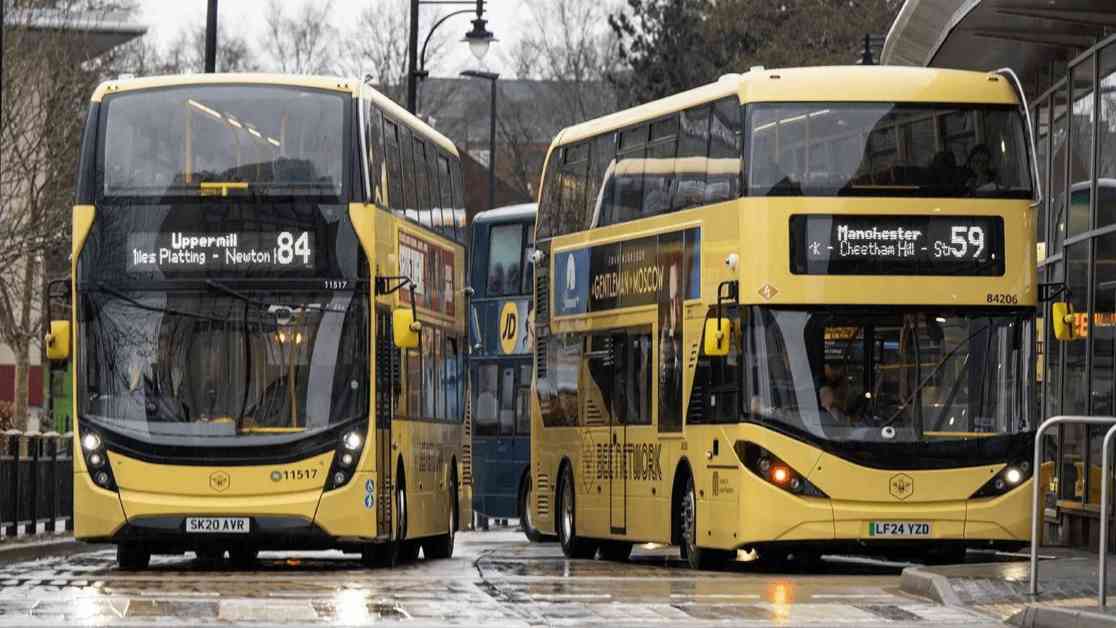Accessibility Challenges Persist in Greater Manchester’s Bee Network
As Greater Manchester’s Bee Network celebrates its one-year anniversary, it is evident that accessibility challenges still plague many areas across the region. While the initiative has undeniably made travel easier for residents, there are places where public transport remains inadequate, leaving commuters stranded or facing lengthy and inefficient journeys.
Salford: A Tale of Inaccessibility
The city of Salford, located just a stone’s throw away from Manchester City Centre, faces significant accessibility hurdles despite being serviced by the Metrolink. However, the Metrolink line only extends to the southern part of Salford, primarily catering to areas close to Salford Quays. This leaves a large portion of the city inaccessible directly from the city center, forcing residents to rely on multiple bus transfers to reach their destinations.
For instance, reaching Kersal, a mere four miles from St Peter’s Square, requires a cumbersome journey involving several buses and an average travel time of 40 minutes. Despite Bee Network buses serving Kersal and its surrounding areas, there is still no direct route connecting it to Manchester City Centre. This lack of efficient transportation options has left residents like Kieran Mills from Pendlebury frustrated and consistently late for work.
Kieran shared his experience, stating, “As I do not drive, Bee Network buses are my only means of commuting to work most days. However, the unreliable service often results in buses running late, if they arrive at all. The overcrowded buses make the journey uncomfortable, with passengers crammed against the doors. It’s evident that the service is subpar, and the Bee Network either lacks the resources or the will to address these issues.”
Disparities in Accessibility: Contrasting Altrincham and Gorton
In contrast to the challenges faced in Salford, areas like Altrincham enjoy more accessible public transport options. Located eight miles from the city center, Altrincham boasts a direct tram service that connects to St Peter’s Square every six minutes, providing residents with a swift and convenient commute.
On the other hand, areas like Levenshulme and Gorton continue to grapple with limited accessibility. Levenshulme, for instance, remains unserved by the Bee Network, leaving residents reliant on overcrowded Stagecoach buses for their commute into the city center. Similarly, Gorton, a notoriously difficult area to reach via public transport, lacks Bee Network bus stops, further complicating the journey for its residents.
Making the trip from Manchester City Centre to Gorton involves either taking a tram to Ashton-under-Lyne followed by a 19-minute bus ride or navigating two separate bus routes, resulting in extended travel times exceeding 40 minutes. These disparities in accessibility highlight the uneven distribution of transportation resources across Greater Manchester, with some areas enjoying efficient services while others struggle with inadequate options.
Stockport: Bridging the Accessibility Gap
Stockport, another key area in Greater Manchester, currently lacks a direct Bee Network bus route from Manchester City Centre. However, residents can access Stockport using existing bus services that are not yet integrated into the Bee Network. Starting January 5, 2025, several services to Stockport, including the 42, 191, 192/X92, 197, and 203 routes, will join the Bee Network, enhancing connectivity and accessibility for commuters traveling between the city center and Stockport.
In conclusion, while the Bee Network has undoubtedly improved travel convenience in Greater Manchester, there are evident challenges that persist in ensuring universal accessibility across the region. Addressing these disparities and enhancing public transport options in underserved areas is crucial to creating a more equitable and efficient transportation network for all residents.

